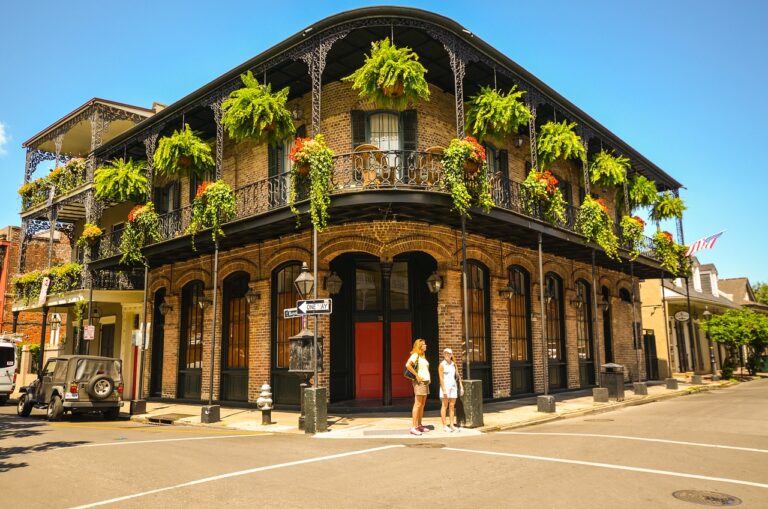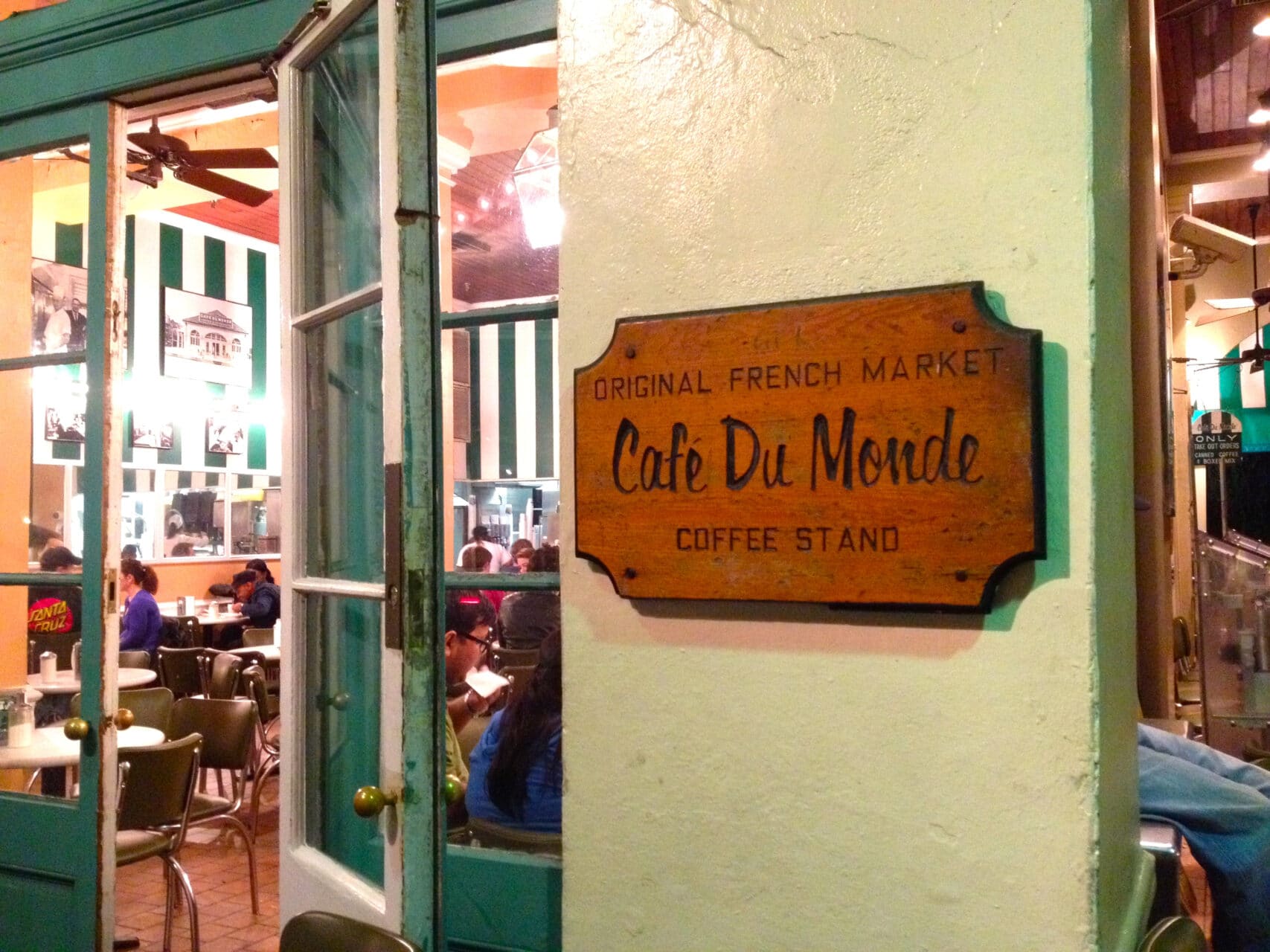
One of the most common questions visitors ask New Orleans locals is, “Where’s the best place to eat?”. However, what some may find surprising is New Orleans is very much a coffee town. Since moving here 7 years ago, I’ve tried as many cafes as I could find! I set out to explore the current coffee scene while learning about older coffee trends. The New Orleans coffee scene is a haven for coffee lovers locally and just visiting that offer everything from major brands to micro-roasters.
New Orleans is the top coffee port in North America with coffee by the ton being shipped to New Orleans’s ports from many coffee-producing countries to be processed, then shipped to companies, large and small, worldwide. In fact, a few miles down the Mississippi River from the French Quarter is the Folgers roasting plant. I’ve woken up many mornings to the city smelling of freshly roasted coffee before I even brewed my cup of the day.
In the 1920s, most of the country had yet to embrace the “coffee break” concept, while New Orleans businessmen had made this mid-morning break part of their daily routines. There’s no evidence that coffee breaks started in New Orleans, but it certainly was popular. Today, a majority of New Orleans residents work in the hospitality and culinary industries, it’s no surprise coffee still plays such an important role in keeping the city running. Or just to give its hard-working locals a much-needed break so the good times can keep rolling.

Possibly one of the most famous places to visit in New Orleans is Cafe du Monde. Since 1842 Cafe du Monde has been offering the iconic pairing of cafe au lait and beignets to locals and tourists 24 hours a day, 7 days a week. The cafe au lait is dark coffee and chicory and then mixed with steamed milk and unique to New Orleans. Like so many things in NOLA, mixing coffee and chicory is a carryover from France, to help stretch limited coffee supplies during the Civil war.
While it is uncertain how long coffee and chicory have been brewed together, it became popular in 19th century France, when Napolean enacted the “Contenitenal Blockade”. This caused a major shortage in the coffee trade, so chicory was added to stretch out what little coffee there was. Even though there is no caffeine in chicory, once roasted the flavor mimics the taste of coffee, making it a suitable additive.
A lesser-known coffee concoction that is purely New Orleans is the Cafe Brulot Diabolique or “Devilish Burned Coffee” which was invented at Antoine’s Restaurant in the 1880’s. A blend of coffee, brandy, and spices was then set afire; this soon became a way to disguise alcohol during Prohibition.
It’s not gone unnoticed that cold brew coffee has become increasingly popular in recent years, but New Orleans has been making and enjoying cold brew long before the rest of us. The local brand, CoolBrew coffee concentrate was started in 1989 by Phil McCorory. Phil was seeking a way to create a less acidic and better-tasting cold brew, and he managed to take the 150-year-old cold-brew process and not only reinvented it but set it on a larger scale. Now CoolBrew is distributing its concentrated coffee all over the country.
Other notable coffee brands that call New Orleans home are Community Coffee and French Market. Community Coffee has been around since 1919 and is one of the largest family-owned businesses in the country. In 1995 they started their coffee house chain, CC’s Coffee House, which serves most Louisiana, Texas, and Alabama locations.
French Market Coffee was founded in 1890, selling cans of their roasted coffee in New Orleans’ French Market. Over a hundred years later, French Market is still going strong and selling their coffee in big chain grocery stores.
Micro roasters and specialty coffee shops have staked their claim in many significant cities, and New Orleans is no different. Some of the local coffee houses that have gained in popularity in recent years are Mojo Coffee House, French Truck Coffee, Coffee Science, and Congregation Coffee Roasters, to name a few. Don’t be surprised if you find Congregation of French Truck coffee offered on the menu at many local restaurants throughout the city. By focusing on dealing fair trade and single-origin beans, these specialty roasters are looking to not only make an impact locally but globally as well.
New Orleans has always been a city where the old traditions are blended with modern times, embracing both its past and future to create a unique culture that is purely New Orleans. This is part of what helps set the coffee scene in the Big Easy apart from other cities. So next time you are seeking a coffee-centric town to visit and want to savor the various rich brews steeped in history, give New Orleans a try.
Awesome article Sara !!!